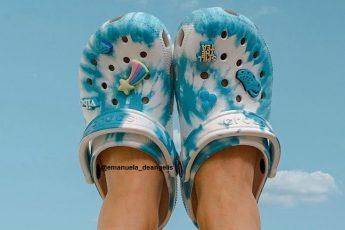10 Low cost ways to promote your fashion brand online

In 2022, it’s expected that the UK fashion industry will reach £60.1 billion, meaning there’s never been a better time to launch an online clothing brand. eCommerce has exploded in recent years, helping more and more entrepreneurs to market their products to wider audiences with fewer overheads.
However, just because fashion businesses have a huge amount of potential, doesn’t mean they’re any less costly to launch. Not only will you need capital to source raw materials and facilitate the manufacturing and production processes, but you’ll also need money to cover marketing and operational expenses.
When it comes to making and producing clothes, there are only so many costs you can cut back on without compromising the quality of your garments. Fortunately, other aspects of your business, such as logistics, operations and marketing, should afford you much more financial flexibility. For example, opting to use software for accounting instead of hiring an in-house accountant can save you a significant amount of money. You may also decide to outsource admin, use lower-cost shipping providers and cut out all paper communications. But what about marketing and promotional costs?
In this blog, you’ll find 10 different ways you can effectively promote your fashion brand to your audience without going over budget.
1. Build a social media presence
Completely free of charge, signing up to social media is one of the most powerful steps you can take in your fashion brand marketing journey. While building your brand and following takes time and considerable effort, it’s one of the best ways to cultivate customer loyalty and cement your business’s positioning in the wider market. Choose your social media platforms carefully and spend some time researching exactly what type of content you need to produce to succeed. Since fashion is so visual, most businesses in the industry benefit from sharing photos on Instagram and, more recently, videos on TikTok.
2. Reach out to bloggers
Guest blogging helps you tap into new audiences who already have an interest in your niche but may not be familiar with your brand. While some blogs ask you to pay to be featured on their website, others will offer you coverage for free, especially if you invest time and effort into building a connection that goes beyond promoting your business on their website. Try to highlight the merits of your brand to convince bloggers that your business and clothing line is one that will be valuable to their audience. Don’t forget, every blog you reach out to should be connected to the fashion industry – an even bigger bonus if the styles they’re interested in are similar to your own.
3. Partner with influencers
The next step after dabbling in guest blogging is striking up partnerships with influencers. While influencers have a reputation for being expensive, with some influencers earning six figures for a single post, micro-influencers are an affordable, low-cost alternative for fledgling businesses. The key to being successful is finding influencers with a lower number of followers but high levels of engagement. This shows that while your clothes won’t be shared with tens of thousands of people, the people who do see them may be more likely to take note and make a purchase. You can sometimes even choose whether you want to pay a small influencer with free products, or a small sum of money.
4. Network with others in your industry
The fashion industry is one that relies heavily on connections, making networking an essential part of spreading the word about your brand. It is possible to network solely online, through platforms like LinkedIn. However, to be in with the best chance of improving business awareness, you should consider going to events such as fashion trade shows and runway shows. Try to take part in these events as much as possible by bringing along samples of your collection or signing up to take part in a workshop or speak on a panel. If these opportunities aren’t available to you, approach speakers and event hosts to introduce yourself.
5. Create an SEO strategy
A solid SEO strategy will help audiences find your products more easily when using search engines like Google. Relying on a mixture of quality content, keywords, backlinks and technical web design, SEO will allow your website to rank closer to the top of search engine results pages. However, it can be difficult to compete with big fashion brands for these top positions, so if you have a unique niche you’re targeting, it’s useful to identify exactly what it is so you can narrow your focus.
6. Pitch to retail buyers
Selling clothes on your own website sometimes isn’t enough. If you already have a steady stream of sales and traffic, pitching your collections to retail buyers could be the next step for you. Many fashion retailers already have loyal customer bases that trust them to deliver quality goods in a reasonable time. Distributing your clothes through them can increase your sales and brand presence significantly, especially if they’re a large company. Before reaching out, refine your pitching technique and make sure you know what volumes you’re able to fulfil. There’s no use partnering with a large retailer when you can’t provide them with enough clothes to meet the demand they anticipate.
7. Email marketing
Whether you currently have an e-mail list or not, it’s never too soon to start building an e-mail marketing campaign. E-mail marketing has existed for decades and it still has the potential to reap impressive results for a low cost, with its ROI estimated at 4200%. Ideas for e-mail marketing include information about new and upcoming launches, style edits and look books, sales and promotional offers, and information about trends or collaborations.
8. Giveaways
Organising a giveaway at the beginning of your fashion business’s journey might seem counterintuitive. After all, giving away free products will surely result in fewer sales, rather than more. However, giveaways can build a considerable amount of excitement, especially if your brand hasn’t launched yet, and may encourage customers to discuss your brand with others and buy more of your clothes over time. For example, giving away limited-edition T-shirts or tote bags with the first 100 orders you receive could incentivise your audience to make a purchase when you first launch a collection. Alternatively, ask your followers to share or comment on one of your Instagram posts to be in with a chance of winning a new pair of shoes.
9. Create high-quality content
Content is one of the key cornerstones of any fashion business. Not only will it contribute to your SEO, social media and e-mail marketing strategies, but it may also encourage audiences to engage with your brand more. Shareable content is more likely to be discussed and distributed online, helping your brand to be seen by a wider audience. For this to happen, the content you produce must be valuable, informative and entertaining.
10. Contact the media
Are you planning to launch a new collection, collaborate with another brand or make some sustainable changes to your fashion brand? Launching a PR campaign and contacting journalists may springboard your business’s sales while simultaneously improving your public image. Unlike guest blogging, PR relies on your business having a story to tell, so try to think ahead and schedule in some magazine or newspaper features for when you have something especially exciting planned.





Leave a Comment